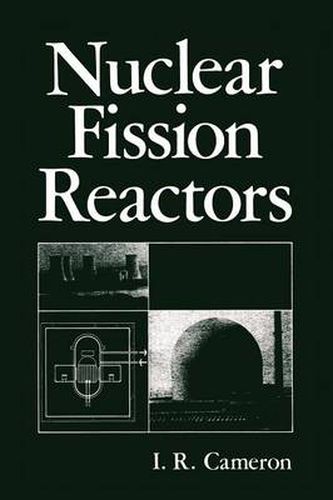Readings Newsletter
Become a Readings Member to make your shopping experience even easier.
Sign in or sign up for free!
You’re not far away from qualifying for FREE standard shipping within Australia
You’ve qualified for FREE standard shipping within Australia
The cart is loading…






This title is printed to order. This book may have been self-published. If so, we cannot guarantee the quality of the content. In the main most books will have gone through the editing process however some may not. We therefore suggest that you be aware of this before ordering this book. If in doubt check either the author or publisher’s details as we are unable to accept any returns unless they are faulty. Please contact us if you have any questions.
This book is intended to provide an introduction to the basic principles of nuclear fission reactors for advanced undergraduate or graduate students of physics and engineering. The presentation is also suitable for physicists or engineers who are entering the nuclear power field without previous experience with nuclear reactors. No background knowledge is required beyond that typically acquired in the first two years of an undergraduate program in physics or engineering. Throughout, the emphasis is on explaining why particular reactor systems have evolved in the way they have, without going into great detail about reactor physics or methods of design analysis, which are already covered in a number of excellent specialist texts. The first two chapters serve as an introduction to the basic physics of the atom and the nucleus and to nuclear fission and the nuclear chain reaction. Chapter 3 deals with the fundamentals of nuclear reactor theory, covering neutron slowing down and the spatial dependence of the neutron flux in the reactor, based on the solution of the diffusion equations. The chapter includes a major section on reactor kinetics and control, including'tempera ture and void coefficients and xenon poisoning effects in power reactors. Chapter 4 describes various aspects offuel management and fuel cycles, while Chapter 5 considers materials problems for fuel and other constituents of the reactor. The processes of heat generation and removal are covered in Chapter 6.
$9.00 standard shipping within Australia
FREE standard shipping within Australia for orders over $100.00
Express & International shipping calculated at checkout
This title is printed to order. This book may have been self-published. If so, we cannot guarantee the quality of the content. In the main most books will have gone through the editing process however some may not. We therefore suggest that you be aware of this before ordering this book. If in doubt check either the author or publisher’s details as we are unable to accept any returns unless they are faulty. Please contact us if you have any questions.
This book is intended to provide an introduction to the basic principles of nuclear fission reactors for advanced undergraduate or graduate students of physics and engineering. The presentation is also suitable for physicists or engineers who are entering the nuclear power field without previous experience with nuclear reactors. No background knowledge is required beyond that typically acquired in the first two years of an undergraduate program in physics or engineering. Throughout, the emphasis is on explaining why particular reactor systems have evolved in the way they have, without going into great detail about reactor physics or methods of design analysis, which are already covered in a number of excellent specialist texts. The first two chapters serve as an introduction to the basic physics of the atom and the nucleus and to nuclear fission and the nuclear chain reaction. Chapter 3 deals with the fundamentals of nuclear reactor theory, covering neutron slowing down and the spatial dependence of the neutron flux in the reactor, based on the solution of the diffusion equations. The chapter includes a major section on reactor kinetics and control, including'tempera ture and void coefficients and xenon poisoning effects in power reactors. Chapter 4 describes various aspects offuel management and fuel cycles, while Chapter 5 considers materials problems for fuel and other constituents of the reactor. The processes of heat generation and removal are covered in Chapter 6.